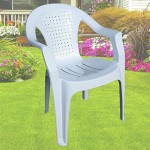Sand Between Pavers: A Guide to Installation and Maintenance
A patio constructed with pavers offers a durable and aesthetically pleasing outdoor space. However, the success of a paver patio hinges on proper installation techniques, including the strategic use of sand between the pavers. Sand plays a crucial role in both the initial installation and ongoing maintenance of the patio, ensuring stability, drainage, and a polished appearance.
Importance of Sand in Paver Installation
Sand serves as a critical component in paver installation, acting as a bedding layer and jointing material. The bedding layer, typically consisting of a compacted layer of sand or a mixture of sand and gravel, provides a level and stable base for the pavers. The sand between the pavers, known as joint sand, fills the gaps, creating a smooth surface, enhancing drainage, and preventing weed growth.
1.
Stability and Leveling:
The bedding layer of sand supports the pavers, ensuring even distribution of weight and preventing settling. This level base contributes to the structural integrity of the patio, minimizing the risk of pavers shifting or becoming uneven.2.
Drainage:
The sand between pavers facilitates drainage, allowing water to flow through the joints and prevent pooling on the surface. This minimizes the risk of water damage to the pavers and surrounding areas.3.
Weed Control:
The tightly packed sand in the joints hinders weed growth, as it restricts access to sunlight and nutrients required for germination. Proper installation and maintenance of the sand infill can effectively control weeds and enhance the overall aesthetic appeal of the patio.Types of Sand for Paver Installation
Choosing the right type of sand is essential for optimal performance and longevity of your patio. There are several types of sand commonly used in paver installation, each with its distinct properties.
1.
Play Sand:
Fine-grained and readily available, play sand is suitable for bedding and jointing. However, it may compact easily over time, requiring frequent re-sanding.2.
Masonry Sand:
Composed of angular particles with a slightly coarser texture than play sand, masonry sand provides excellent drainage and stability, making it ideal for jointing.3.
Polymeric Sand:
This type of sand contains polymer binders that harden when exposed to moisture, creating a firm and durable joint that resists erosion and weed growth. Polymeric sand is highly effective but can be more expensive than traditional sand options.Maintaining Sand Between Pavers
Regular maintenance of the sand between pavers is crucial for preserving the beauty and functionality of your patio. Over time, sand can be washed away by rain, compacted by foot traffic, or disturbed by weed growth, requiring replenishing or re-sanding.
1.
Sand Replenishment:
Periodically inspect the sand joints for any gaps or areas where sand has been washed away. Use a broom or a specialized sand spreader to add sand to the joints, ensuring a consistent level and tightly packed surface.2.
Re-Sanding:
In cases where the sand has been significantly compacted or eroded, a process known as re-sanding is necessary. This involves removing the existing sand, cleaning the pavers, and applying a fresh layer of sand.3.
Weed Control:
Regularly inspect for weed growth and remove them promptly to prevent their roots from disrupting the sand joints and potentially damaging the pavers.Maintaining the sand between pavers is an ongoing process that requires regular attention. By addressing any deficiencies promptly, you can ensure the long-term stability, drainage, and aesthetic appeal of your paver patio.

How To Replace Sand Between Pavers Easy Guide

How To Use Polymeric Sand Block Weeds In Our Paver Patio Young House Love

Applying Polymeric Sand To An Existing Patio Or Walkway Sakrete

Benefits Drawbacks Of Using Polymeric Sand On Your Hardscape

Sealing Pavers With Sand 10 Expert Tips From Top Paver Companies The Sealer Store

How To Put Sand Between Pavers

Sand For Pavers Top 10 Facts Everyone Should Know The Paver Sealer Store

Paver Rehab Project Phase 1 Rejointing Concrete Pavers Belgard

What Kind Of Sand Goes Under Pavers

The Pros Cons Of Using Polymeric Sand As A Joint Filler For Brick Pavers








